Sake Professional Course in New York, inside Brooklyn Kura
October 28 – 30, 2024
Recognized by the Sake Education Council
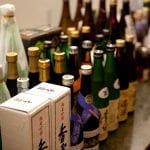 From Monday, October 28 to Wednesday, October 30, 2024, I will hold the 52nd overall and 33rd North American running of the Sake Professional Course, and in will be held inside Brooklyn Kura in Brooklyn, New York. It does not get much better than a sake course run from inside a sake brewery! The course is recognized by the Sake Education Council, and those that complete it will be qualified to take the exam for Certified Sake Specialist, which will be offered on the evening of the last day of the course.
From Monday, October 28 to Wednesday, October 30, 2024, I will hold the 52nd overall and 33rd North American running of the Sake Professional Course, and in will be held inside Brooklyn Kura in Brooklyn, New York. It does not get much better than a sake course run from inside a sake brewery! The course is recognized by the Sake Education Council, and those that complete it will be qualified to take the exam for Certified Sake Specialist, which will be offered on the evening of the last day of the course.
Note that I will not be running the SPC Level I course in Japan in 2025, at least not in January. This will be your last chance to participate in SPC live for the foreseeable future.
The course is geared toward industry professionals wishing to expand their horizons in a thorough manner into the world of sake, and will therefore be somewhat technical in nature, and admittedly somewhat intense. It is likely more than the average consumer needs! But the course is open to anyone with an interest in sake and will certainly be enjoyable. The course lectures and tasting will begin with the utter basics, and will thoroughly progress through and cover everything related to sake. There will be an emphasis on empirical experience, with plenty of exposure to a wide range of sake in the tasting sessions throughout the three days. Each of the three days will provide the environment for a focused, intense and concerted training period.
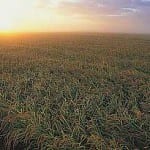 The goal of this course is that “no sake stone remains left unturned,” and my motto is “exceed expectations for the course.” Every conceivable sake-related topic will be covered, and each lecture will be complemented and augmented by a relevant tasting session. Participants will not simply hear about differences based on rice types or yeast types, they will taste and smell them. Students will not only absorb technical data about yamahai, kimoto, nama genshu, aged sake and regionality, they will absorb the pertinent flavors and aromas within the related sake as well. Participants will taste over 80 sake within five focused tasting exercises across the three days.
The goal of this course is that “no sake stone remains left unturned,” and my motto is “exceed expectations for the course.” Every conceivable sake-related topic will be covered, and each lecture will be complemented and augmented by a relevant tasting session. Participants will not simply hear about differences based on rice types or yeast types, they will taste and smell them. Students will not only absorb technical data about yamahai, kimoto, nama genshu, aged sake and regionality, they will absorb the pertinent flavors and aromas within the related sake as well. Participants will taste over 80 sake within five focused tasting exercises across the three days.
Also, as mentioned above, an exam is given at the end of the course for those that choose to seek certification. Those that pass receive a “Certified Sake Professional” certification from the non-profit organization The Sake Education Council.
The cost for this five-day educational experience is US$1099. This includes all instruction and testing fees, and of course sake to be tasted. All meals, transportation and hotel are not included in the tuition.
Participation is limited and reservations can be made now to secure a seat; full payment will be requested by September 27th, 2024. Download the formal announcement here. You can read testimonials from past participants here. For reservations or inquiries – heck, for any questions at all, please send an email to sakeguy0494@gmail.com. Once you express interest in making a reservation via email to me, I will send another document with much more detail.
“No Sake Stone Remains Left Unturned!”
Syllabus and Daily Schedule
Day I
9:00 – 12:30 Welcome, Orientation, Sake Basics, Sake Types, Terms found on Sake Labels
Tasting I: typical representatives of various grades, milling rates
1:00 – 3:00 Sake Production
3:00 – 4:30 Rice Types, Yeast Types, Water, Koji
Tasting II: Rice types, Yeast types
Day II
9:00 to 12:00 Sake Chemistry: nihonshu-do, acidity, amino acidity.
Yamahai and Kimoto. All things nama-zake.
Tasting III: Yamahai and Kimoto. Pasteurized and unpasteurized sake.
12:00 to 1:00 Lunch
1:00 – 5:00 Pressing methods. Aging and maturity. Non-standard sake types like nigori, low alcohol sake, sparkling sake, red sake, taruzake etc. Sake competitions. Vessels, temperature, toji guilds.
Tasting IV: Nama-zake, aged sake, various non-standard sake. The same sake in various vessels. Sake suited for warming. Competition sake.
Day III
9:00 – 12:00 Sake regionality, sake and food, sake competitions, history, the state of the industry.
Tasting V: Sake Regionality
12:00- 1:00 Lunch
1:00 – 3:00 Break
3:00 – 4:30 Exam






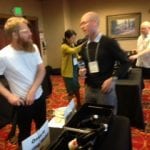
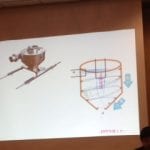
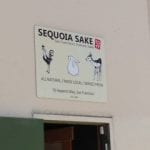
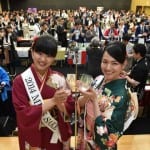
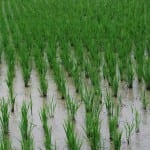
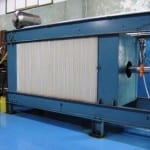
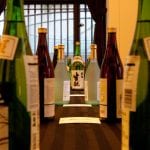
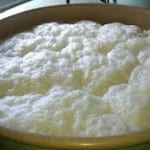
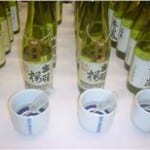
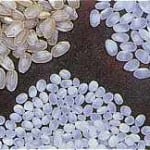
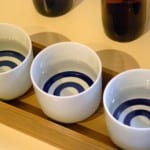
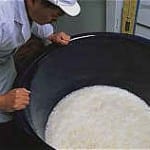
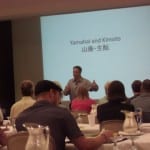
 Al Gizzi likely never thought his legacy would live on in quite this way. And he surely never considered that he would be associated with sake. Al Gizzi does not even likely remember me.
Al Gizzi likely never thought his legacy would live on in quite this way. And he surely never considered that he would be associated with sake. Al Gizzi does not even likely remember me.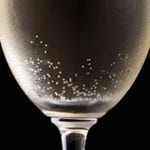 bottle. Another is made by jacking sake with carbon dioxide. Everything in the Universe has a price, and this includes bubbles in your sake. That price is paid from the coffers of flavor. Much of this sparkling sake has an alcohol content of about eight percent, yet others are up around 14 percent. To me, it generally tastes like spiked cream soda; it is just the size of the spike that differs. But admittedly cream soda has its appeal too, and sparkling sake can be very drinkable.
bottle. Another is made by jacking sake with carbon dioxide. Everything in the Universe has a price, and this includes bubbles in your sake. That price is paid from the coffers of flavor. Much of this sparkling sake has an alcohol content of about eight percent, yet others are up around 14 percent. To me, it generally tastes like spiked cream soda; it is just the size of the spike that differs. But admittedly cream soda has its appeal too, and sparkling sake can be very drinkable.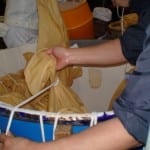 Kijoushu
Kijoushu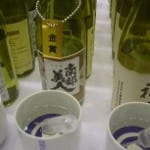 In May, the 105th Zenkoku Shinshu Kanpyoukai was held in Japan. The official English name for this contest is the Japan Sake Awards, but the literal translation is much more descriptive if slightly unwieldy: the National New Sake Tasting Competition. It is the longest running competition of its kind anywhere in the world. Those interested can find more information in the archives of this newsletter (which go back to 1999!), in particular in the June or July editions for each year.
In May, the 105th Zenkoku Shinshu Kanpyoukai was held in Japan. The official English name for this contest is the Japan Sake Awards, but the literal translation is much more descriptive if slightly unwieldy: the National New Sake Tasting Competition. It is the longest running competition of its kind anywhere in the world. Those interested can find more information in the archives of this newsletter (which go back to 1999!), in particular in the June or July editions for each year.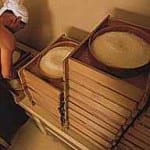
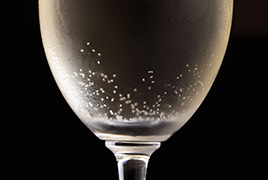
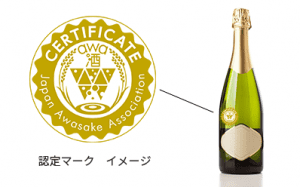

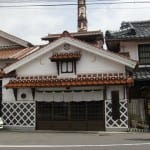
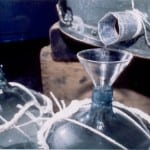
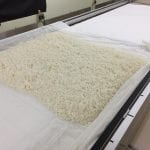
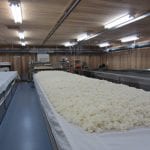
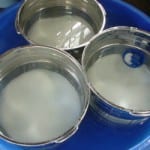
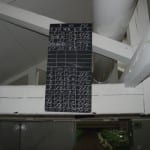 Several years ago, in July of 2014, the Yamagata Prefecture Sake Brewers’ Association began the process of securing a designation of their sake as a Geographical Indication recognized by the World Trade Organization and various international treaties. In order to qualify for something like this, a product (any product applying for a GI) must possess qualities or a reputation that are due to that origin. Securing such a designation gives the region and its producers the exclusive right to an appropriate indication on the label.
Several years ago, in July of 2014, the Yamagata Prefecture Sake Brewers’ Association began the process of securing a designation of their sake as a Geographical Indication recognized by the World Trade Organization and various international treaties. In order to qualify for something like this, a product (any product applying for a GI) must possess qualities or a reputation that are due to that origin. Securing such a designation gives the region and its producers the exclusive right to an appropriate indication on the label.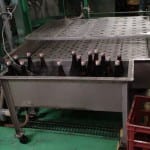 There are at present 51 sakagura brewing in Yamagata. The oldest of these dates back to the Japanese “Warring States” era of long civil war, while the youngest can trace their roots to the beginning of the Edo period. Even the new kid in town is an old and dignified character.
There are at present 51 sakagura brewing in Yamagata. The oldest of these dates back to the Japanese “Warring States” era of long civil war, while the youngest can trace their roots to the beginning of the Edo period. Even the new kid in town is an old and dignified character.